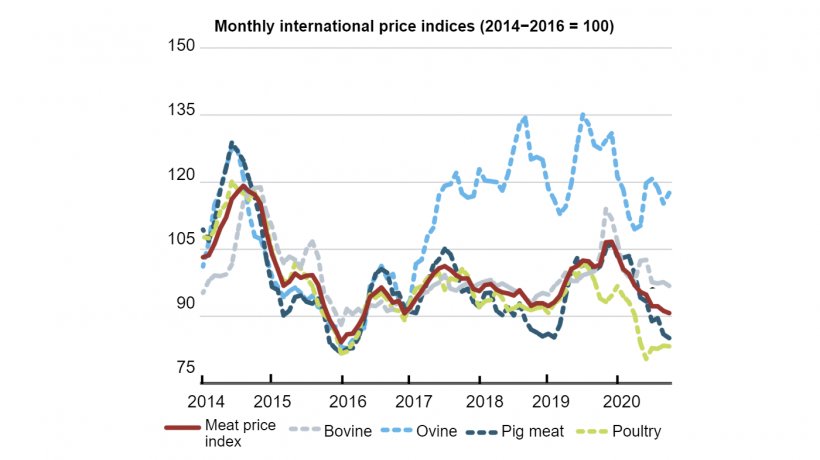World meat production in 2020 is forecast at 337.3 million tonnes (carcass weight equivalent), down 0.5% year-on-year, a markedly less downbeat forecast than earlier anticipated, but still marking a second consecutive year of decline.
An expected drop in pig meat production –mostly in Asia and especially in China – caused by the continued impact of the African swine fever disease, is responsible for much of the foreseen downturn in global meat production, along with likely declines in bovine meat output in India, Australia and Brazil, among others, caused by tight supplies. By contrast, poultry meat production is anticipated to expand, albeit at slightly over half the rate recorded last year, due to robust demand, mostly reflecting the deficit and high domestic prices of pig meat in China. Modest output growth is also predicted for ovine meat.

The pace of production expansion across all meat sectors has been moderated by the pandemic-related disruptions to production processes and producers’ output restraints to balance supply under uncertain demand, despite government stimulus packages targeting the industry.
World meat trade is forecast to grow to 37.6 million tonnes in 2020, up 3.9% year-on-year, a significantly lower growth rate than the 6.9% in 2019, reflecting import curtailments by many countries, consistent with the negative impacts of COVID-19 market disruptions to global meat trade and the deep global recession. By contrast, China’s meat imports are forecast to expand by 44% or more than 3 million tonnes, from 2019, absorbing around 30% of the world meat exports. Much of the expected rise in global meat imports is likely to be met by exports from Brazil, the United States of America, Canada, Mexico, the Russian Federation and the European Union.
Notwithstanding the significant rise in meat imports by China, a combination of COVID-19-related economic hardships, reduced demand from the food services sector, logistical bottlenecks and limited availability of foreign exchange in some meat importing countries has weakened global import demand, compared with export availabilities, causing international meat prices to fall this year. The sharpest drop has been registered for pig meat, followed by poultry, bovine and ovine meats. Given that COVID19-related market disruptions are likely to persist, meat demand is expected to remain subdued in the coming months, keeping international meat prices under pressure.
FAO. 2020. Food Outlook - Biannual Report on Global Food Markets – November 2020. Rome. https://doi.org/10.4060/cb1993en





